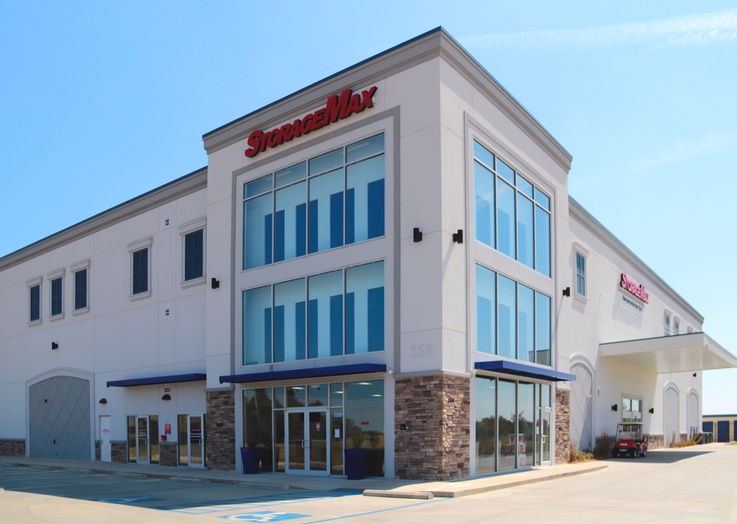Worried Workers: Reinvigorating Post-COVID Employees
Anita has returned to the office after weeks of working from home. To her manager’s surprise, she no longer exhibits her customary drive. She seems disengaged with her work and uninterested in customers.
Robert continues to work from home since his duties do not require an on-site presence. His supervisor can’t help but notice a decline in motivation. The one-time dynamo no longer bubbles with creative ideas that help drive profitability.
Your success as a going concern depends on your ability to light fires under anyone like Anita and Robert who seems to have exhausted their inner resources. Let’s examine why so many workers feel a slump in enthusiasm.
Curing Anxiety
“Employees everywhere are feeling a high level of anxiety because of the COVID-19 outbreak,” says Jack Altschuler, president of Fully Alive Leadership in Northbrook, Ill. “Anxiety makes people see everything in the light of their fear.” And fearful people, he says, perform poorly. The energy that would normally go to their work goes instead toward worrying about the health and financial survival of their families and themselves.
Much of this worry takes the form of unanswered questions. “Employees are concerned about many unknowns caused by the virus,” says Dr. Karlyn Borysenko, principal at Zen Workplace, a consulting firm outside of Boston. “They are asking questions such as, ‘Is my job safe? Will the business survive? How will the pandemic affect the economy? Can I believe what the bosses are saying?’ These questions and others reflect a good deal of uncertainty, and uncertainty is always a challenge to motivation.”
The problem is made worse by the insecurity of supervisors themselves. “Because managers in many cases do not know what’s going on, they do not have a way to comfort the employees with information,” says Borysenko.
Winging it, while tempting, can only make matters worse. “If you are not sure about something, you should communicate that fact,” says Borysenko. “Don’t hesitate to say you don’t know. Then follow up that statement with something like, ‘As soon as I do know, I will tell you.’”
The goal of all of the above is to assure people that management will respond quickly and conscientiously to new information as it is discovered. In the meantime, people should know the business will reduce the risk of harm by taking extraordinary safety measures.
Personal Connections
If anxiety is a highly individualized phenomenon, so is its cure: Supervisors must renew connections with their charges and retool the environment in response to individual needs.
“Everything that happens right now in the workplace must revolve around the needs of each employee,” says Altschuler. “That is the starting point and the overarching message.”
The launching pad for this initiative is the expression of a genuine concern for the staff’s well-being. “People want to feel cared about,” says Altschuler. “When someone cares about me, the last thing I want to do is let that person down.”
Consider the case of Anita from our story’s opening. Although she has expressed some good feelings about returning to the workplace, much of her current malaise likely derives from her concern about the safety of that very environment. Management must convince her that everything possible has been done to reduce risk.
“The source of anxiety for people like Anita is often fear of the unknown,” says Martha Forlines, president of Belief System Institute in Ellijay, Ga. “Employers need to continually remind their charges about the safety precautions taken to keep everyone safe. These can include disinfection of the office, assuring the availability of face masks, and the alteration of seating arrangements to maintain social distancing.”
While some of the COVID-19 fears are obvious, others may not be. Supervisors should encourage two-way communications with employees to uncover unanticipated fears. “Ask employees what they need to make them feel motivated and good about their working conditions,” says Forlines. “Their answers will take the guess work out of the equation.”
Remote Workers
Now, how about James, who is still working from home? Re-charging his batteries may prove more challenging than the same task with Anita. The absence of any face-to-face contact beyond the cold stare of the computer screen is likely the root of the problem. Isolation can mean a deprivation of the usual personal stimulation gained from interaction with colleagues. Not only is there a joy in working together that goes missing in a remote environment, but solitude can also magnify COVID-19 fears. “A lack of face-to-face contact does have an effect on people,” says Altschuler. “They start to feel more uncertain and fearful.”
Employees unmoored from the traditional working environment can also experience a loss of purpose. “Remote workers can lose clarity about why they are doing what they are doing, about the so-called vision statement,” says Altschuler. “It’s easy to forget they are engaged in something noble and helpful.” Millennials can be especially sensitive to such a moral vacuum, he adds. “More than previous generations, millennials put more value on meaningful work.”
Finally, people separated from their colleagues can miss the satisfaction of performance feedback. “One of the things that motivate people is a feeling of mastery over their work,” says Altschuler. “And that feeling fails to grow when they are not working closely with the other members of their team.”
The solution to these problems starts with more frequent engagement. “Establish a shorter communication cycle time,” says Altschuler. “If you scheduled a weekly check-in before the employee started working from home, that may not be sufficient now. Remember that you no longer benefit from those quick water cooler conversations to fill things in, so maybe now you need to check in twice a week.”
Managers also need to show interest in the remote worker’s working habits and emotional state. “Home workers tend to spend more hours at their desks and often fail to get enough physical exercise,” says Borysenko. “That can affect their focus during the day and translate into productivity problems.” Managers need to give permission to take breaks and walks.
Managers can also encourage home workers to network as a team and engage in activities that improve their psychological well-being. Perhaps they can organize exercise groups, conferencing on cell phones during walks. “Try organizing remote workers in pairs and have them work on tasks together so they do not feel so isolated,” says Altschuler. “You might establish a larger mission by organizing a Red Cross blood drive or a volunteer group at a food bank. Such ‘culture building activities’ bring people together.”
Hot Buttons
If Anita and Robert represent employees in general, the advice for re-motivating them is valid. But in human psychology, one size does not fit all. “Good managers realize that people are motivated by different things,” says Dennis Whittaker, Ph.D., a Charlotte, N.C.-based psychologist who specializes in corporate psychology. “They make an effort to discover each person’s hot button—the motivator intrinsic to their personality—then push that button every day.”
Some people may be motivated by status and by sales results. Others may be motivated by workplace stability, by joy in the process, and by the details of their work assignments. Still others might desire to collaborate and bring people together. Furthermore, people can possess mixed motivational bags.
Sometimes you can ferret out hidden motivators by just asking. Other times, employee actions can be revealing. “Pay attention to what people do well,” says Borysenko. “When you see employees who thrive in group settings and seem to love bringing teams together, for example, you can be sure they are motivated by collaboration.”
One final thing: Many supervisors assume that financial compensation is a prime motivator, but experience shows that employees usually want something more. “Money is just a ‘satisfier,’” says Forlines. “If you pay people fairly for their expertise, money will not be an issue.” Indeed, she says, money most often comes into the picture when people think they are not being fairly compensated. But as a productivity booster, it falls short.
The Success Environment
Successful motivation occurs not so much by working some magic on an employee but rather by re-engineering the working environment in ways that stimulate each individual’s hot buttons. “There is a fallacy that you can motivate people,” says Dr. Kevin D. Gazzara, founder and senior partner of Magna Leadership Solutions in Phoenix, Ariz. “That’s not true. What you can do is create an environment that raises the potential for motivation.”
Some motivators can light fires under all of your employees, whether still working at home or back at the traditional workplace. For example, most of the Roberts and Anitas of your world will respond productively to a consciously and gradually increasing degree of autonomy. Words such as “use your judgment about the best way to get this done” will help spark creative initiative by focusing on results rather than method.
Providing the right degree of autonomy is something of a balancing act. “You need to create a motivating environment in which the work given people is challenging enough for them to avoid boredom, but not so intimidating as to cause anxiety,” says Gazzara. “When people have the right balance of challenge and skill, they can get into a zone I refer to as ‘the flow’. And then their engagement with the enterprise goes way up.”
The right amount of autonomy will encourage employees to exercise creativity in problem solving and to master new skills. They will also see their work as having a meaning deeper than just the earning of a paycheck. “Engaged people enjoy what they do, do more of it, and work longer and harder,” says Whittaker. “As a result, the business gets more mileage out of their working hours, and that is the very definition of productivity.”
Enhanced performance can lead to unexpected benefits. One is the retention of top performers. “Engaged people are more likely to stick around,” says Whittaker. “And that’s good because the business can avoid the expense of recruiting, interviewing, assessing, and onboarding new people.”
Those same deeply engaged employees are likely to identify closely with your enterprise, helping you recruit still more high-quality people and transform your business into a robust profit-making machine. “Motivated employees take the initiative to perform better and improve business processes,” says Whittaker. “But they will only do that if they feel their future is tied to their place of work.”
New York-based freelancer Phillip M. Perry negotiates win-win deals with his clients everywhere.
More Content
Popular Posts
Recent Posts
When Germantown High School in Gluckstadt,...
It’s comforting to know that no matter how...
A very wise self-storage expert once said...
Senate Bill 709 (SB709) has many in the...
In January, self-storage industry veteran...
In April 1984, the first non-stop commercial...
Raise your hand if you’ve ever made plans,...
Everyone knows it: Investing in real estate...









